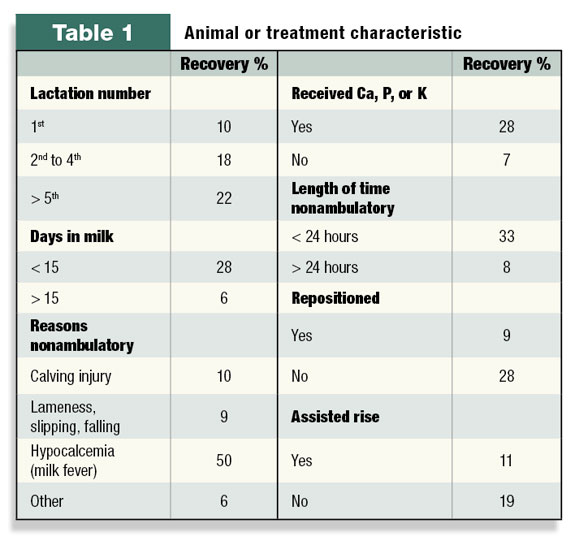Public perception of dairy, and agriculture in general, is extremely important to continuing production of food in this country. Animal welfare in particular, has become an area of great concern, and although all farmers strive to take excellent care of their animals, they are sometimes perceived by the non-farming community as not concerned with the health and well-being of production animals.
In addition to the effects that animal welfare legislation may have on the dairy industry, some welfare issues also have far-reaching implications for profitability and time management; meaning that good overall animal husbandry and farm management truly go hand-in-hand with animal welfare â a concept that should be well broadcast among those that are skeptical of production agriculture.
One area in which the dairy industry may be scrutinized is the care of nonambulatory cows, or down cows. It can be extremely difficult to make the decision when to give up on a down cow, and many producers may hold on to cows in the hopes that calving injury will heal, or one more bottle of calcium will get her up. For this reason, the handling and care of down cows is a serious animal welfare issue on dairy operations.
According to a study conducted by the National Animal Health Monitoring Systems (NAHMS), more than 75 percent of operations in the 21 major dairy states had at least one down cow over the course of a year. After giving it some thought, I decided to look into the rates at which down cows recover and the time-frames associated with their recovery.
During a Google search on the topic, I came across the dairy portion of the NAHMS Nonambulatory Livestock Study published in the June 2008 issue of the Journal of Dairy Science. One objective of the study was to describe factors associated with the recovery of individual down cows.

Table 1 summarizes some of the findings of this study. Overall, the rate of recovery of down cows and the time- frame after which recovery becomes unlikely, may be startling to some.
The study found that older down cows were more likely to recover than younger down cows. Also, down fresh cows (less than 15 days in milk) had greater recovery than other down cows. These findings may be attributed to greater rates of milk fever in older, fresh cows and the greater recovery of cows with milk fever compared with other reasons, such as calving injury, lameness or slipping and falling.
Cows that were down for less than 24 hours were more likely to recover compared with cows that were down for greater than 24 hours. Typically, there is more severe muscle and nerve damage the longer a cow is down.
The authors of this study indicated that six hours is a critical threshold for down cows at which point muscle and nerve damage are more likely to occur, so down cows should really be treated as medical emergencies. Ideally, down cows should be repositioned (alternating between left and right sides) every few hours.
Even though repositioning and lifting down cows did not improve recovery rate in the NAHMS study, the authors suggested that this finding is influenced by the quick recovery of cows with milk fever that did not require repositioning before they were able to rise successfully on their own. These findings should not discourage caretakers from repositioning or lifting cows that have been down for a prolonged period of time.
The take-home message from this study was that euthanasia should be considered for cows that have been down for more than 24 hours, based on recovery and animal welfare. In addition, the likelihood of these cows recovering after 24 hours decreases markedly. Based on the NAHMS study, the likelihood of a down cow recovering after 24 hours is only 8 percent, and recovery of cows at any length in time that have suffered calving injury, slipping, falling or lameness, is not much higher.
Down cows require immediate and thorough care in order to increase their chances of recovery. However, after 24 hours, and depending on the reason the cow is down, euthanasia should be considered. Not only do down cows take considerable time and money to manage properly, they have potential to damage the image of the dairy industry as being a humane industry. Euthanasia can therefore be both a good management decision, as well as a good animal welfare decision. PD
References omitted due to space but are available upon request by sending an email to editor@progressivedairy.com .
â Excerpts from Cornell University Regional Dairy Newsletter, Vol. 1, No. 3
Heather Dann
Researcher
Miner Institute
dann@whminer.com





